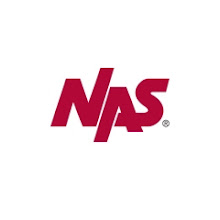The Internet of 1996 is almost unrecognizable compared with what we have today.
It's 1996, and you're bored. What do you do? If you're one of the lucky people with an AOL account, you probably do the same thing you'd do in 2009: Go online. Crank up your modem, wait 20 seconds as you log in, and there you are—"Welcome." You check your mail, then spend a few minutes chatting with your AOL buddies about which of you has the funniest screen name (you win, pimpodayear94).
Then you load up Internet Explorer, AOL's default Web browser. Now what? There's no YouTube, Digg, Huffington Post, or Gawker. There's no Google, Twitter, Facebook, or Wikipedia. A few newspapers and magazines have begun to put their articles online—you can visit the New York Times or Time—and there are a handful of new Web-only publications, including Feed, HotWired, Salon, Suck, Urban Desires, Word, and, launched in June, Slate. But these sites aren't very big, and they don't hold your interest for long. People still refer to the new medium by its full name—the World Wide Web—and although you sometimes find interesting stuff here, you're constantly struck by how little there is to do. You rarely linger on the Web; your computer takes about 30 seconds to load each page, and, hey, you're paying for the Internet by the hour. Plus, you're tying up the phone line. Ten minutes after you log in, you shut down your modem. You've got other things to do—after all, a new episode of Seinfeld is on.
On June 25, 1996, Michael Kinsley introduced Slate in an inaugural column. Two months later, David Plotz wondered who pays for the Internet. In 1997, Carol M. Beach pondered the possibility of taxing the Web. In 1999, Timothy Noah credited the Democratic Party with the Internet's invention. In 2003, Kevin Werbach heralded the return of the 1995 Internet. In 2006, Paul Boutin examined the highly imprecise science of measuring traffic, and in 2008 Chris Wilson complained that the Internet was still infuriatingly slow.
I started thinking about the Web of yesteryear after I got an e-mail from an idly curious Slate colleague: What did people do online back when Slate launched, he wondered? After plunging into the Internet Archive and talking to several people who were watching the Web closely back then, I've got an answer: not very much.
We all know that the Internet has changed radically since the '90s, but there's something dizzying about going back to look at how people spent their time 13 years ago. Sifting through old Web pages today is a bit like playing video games from the 1970s; the fun is in considering how awesome people thought they were, despite all that was missing. In 1996, just 20 million American adults had access to the Internet, about as many as subscribe to satellite radio today. The dot-com boom had already begun on Wall Street—Netscape went public in 1995—but what's striking about the old Web is how unsure everyone seemed to be about what the new medium was for. Small innovations drove us wild: Look at those animated dancing cats! Hey, you can get the weather right from your computer! In an article ranking the best sites of '96, Time gushed that Amazon.com let you search for books "by author, subject or title" and "read reviews written by other Amazon readers and even write your own." Whoopee. The very fact that Time had to publish a list of top sites suggests lots of people were mystified by the Web. What was this place? What should you do here? Time recommended that in addition to buying books from Amazon, "cybernauts" should read Salon, search for recipes on Epicurious, visit the Library of Congress, and play the Kevin Bacon game.
Source: By Farhad Manjoo, Posted to Slate.com Tuesday, Feb. 24, 2009, at 5:33 PM ET
Monday, March 2, 2009
Subscribe to:
Post Comments (Atom)






No comments:
Post a Comment